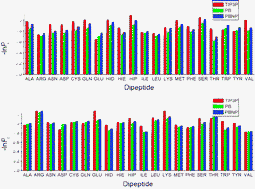Quantitative analysis of Poisson–Boltzmann implicit solvent in molecular dynamics
Abstract
A critical issue in the development of implicit

* Corresponding authors
a
Department of Molecular Biology and Biochemistry, University of California, Irvine, US
E-mail:
rluo@uci.edu
Fax: +1 (1)949 824 9551
b Department of Biomedical Engineering, University of California, Irvine, US
A critical issue in the development of implicit

 Please wait while we load your content...
Something went wrong. Try again?
Please wait while we load your content...
Something went wrong. Try again?
J. Wang, C. Tan, E. Chanco and R. Luo, Phys. Chem. Chem. Phys., 2010, 12, 1194 DOI: 10.1039/B917775B
To request permission to reproduce material from this article, please go to the Copyright Clearance Center request page.
If you are an author contributing to an RSC publication, you do not need to request permission provided correct acknowledgement is given.
If you are the author of this article, you do not need to request permission to reproduce figures and diagrams provided correct acknowledgement is given. If you want to reproduce the whole article in a third-party publication (excluding your thesis/dissertation for which permission is not required) please go to the Copyright Clearance Center request page.
Read more about how to correctly acknowledge RSC content.
 Fetching data from CrossRef.
Fetching data from CrossRef.
This may take some time to load.
Loading related content
